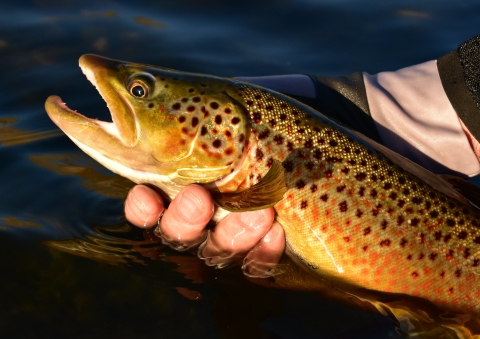Projects and Research
National Fish Hatcheries raise fish and other aquatic species – like crayfish and mussels - to help restore and sustain important fish and other aquatic species for the benefit of the American people. Freshwater mussels play very important roles in our rivers and lakes filtering the water and creating habitat for fish and aquatic insects fish like to eat. With declining fish populations and declining freshwater mussel populations becoming prevalent across the world, fish hatchery operations are important than ever.
The U.S. Fish and Wildlife Service (Service), D.C. Booth Historic National Fish Hatchery (D.C. Booth) is part of a regional effort to reduce or eradicate unwanted fish populations, such as non-native brown trout in certain waterways. D.C. Booth is partnering with Idaho Game and Fish and the South Dakota McNenny State Fish Hatchery on this new research to eradicate non-native trout via double YY chromosome Brown trout. This 50 year-old technology is being used to develop fish populations whose offspring can only produce males. These males have two YY chromosomes rather than the XY arrangement. By stocking YY-male hatchery fish into a body of water with an undesired fish in it (such as a non-native trout out-competing native
trout in certain areas) could change the ratio to all males within a few generations and thus cause them to die out.



